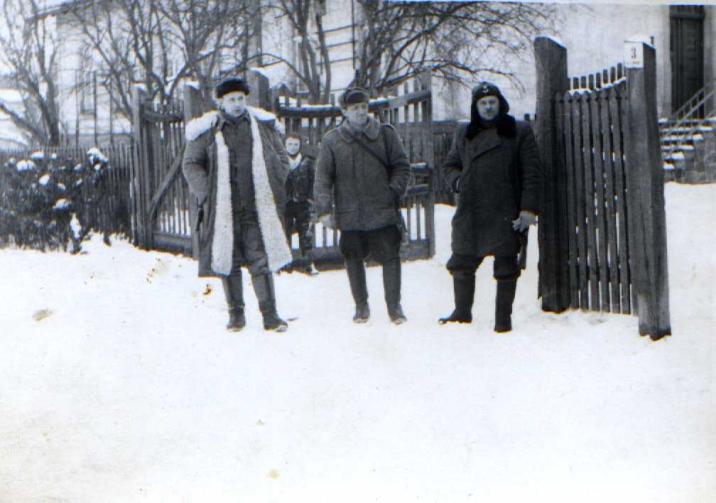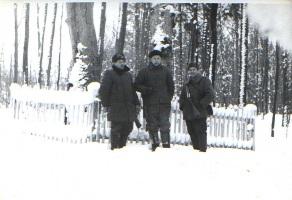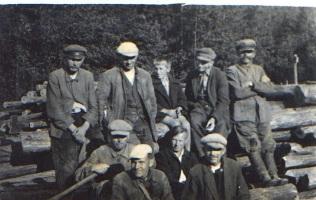 Asset Publisher
Asset Publisher
Polish forests
Poland is in the European lead, while concerning the area of all forests. They cover about 29,2 % of the country territory, and grow within the area of 9,1 million hectares. The overwhelming majority of the forests is state owned, of which almost 7,6 million hectares are managed by the State Forests National Forest Holding..
The number of Polish forest is still growing. The forestation rate of the country has increased from 21 % in 1945 to 29,2 % at the moment. Between 1995 and 2008, the forest area increased by 310 thousand ha. The basis for afforestation works is the "National Programme for Increasing the Forest Cover" (KPZL), assuming an increase of the forestation rate up to 30 % by 2020 and up to 33 % by 2050. Polish forests abound in flora, fauna and fungi. 65 % of the total number of animal species live there.
The forests grow in our country on poor soils, mainly because of the development of the agriculture in previous years. It influences the distribution of the types of the forest sites in Poland. Over 55 % of the forest areas is covered with coniferous forests. In other areas, there are forest sites, mainly the mixed ones. Their small part constitute alder and riparian forests – not more than 3 %.
In the years 1945 – 2011 the area of natural deciduous tree stands within the area of the State Forests National Forest Holding increased from 13 to 28,2 %.
Within the lowlands and uplands the most often occurring tee species is pine. It covers 64,3 % of the forest area of the State Forests National Forest Holding and 57,7 % of private and commune forests. In the mountains the predominant species is European spruce ( in the west) and European spruce with beech (in the east). Domination of pine is the result of carrying on sustainable forest management in the past. Once, the monocultures (crops or cultivations of one species) were the answer to the great demand of industry for wood. Such forests appeared to be quite fragile to climatic factors. They also were often the prey of pests' expansion.
In Polish forests, the share of other tree species, especially deciduous trees have been systematically increasing. The foresters have stepped aside from monocultures – that is why, they try to fit specific species of the forest stand to the natural stand, that would be proper for the given area. Thanks to that, in the years 1945 – 2011, the area of the deciduous tree stands within the lands of the State Forests National Forest Holding increased from 13 to 28,2 %. There occur more and more frequently the following tree species: oaks, ashes, maples, sycamore maples, elms, but also birches, beeches, alders, poplars, hornbeams, aspens, tilias and willows.
Our forests are the most often represented by the forest stands aged 40 to 80 years. The average age of the forest equals 60 years. More and more trees are of big size at the age over 80 years. Since the end of the Second World War, the forests' area has increased up to almost 1,85 million hectares.
Raport o stanie lasów w Polsce 2012
 Asset Publisher
Asset Publisher
 Asset Publisher
Asset Publisher
Nadleśnictwo - historia
Nadleśnictwo - historia
Historia administracji leśnej na terenie obecnego nadleśnictwa ma prawie 200 lat.
W 1810 roku powstało Königlichen Oberförsterei Jacobshagen, czyli Królewskie Nadleśnictwo Jakubowo (do 1948r. Dobrzany nazywały się Jakubowo).
Mapy i operaty urządzeniowe z 1820r., a zwłaszcza z 1867r. świadczą o planowej gospodarce leśnej. Nadleśnictwo zarządzało dość dużymi kompleksami leśnymi systematycznie powiększanymi i scalanymi poprzez wykup gruntów i lasów prywatnych, które i tak w okresie przedwojennym zajmowały ok.50% ogółu lasów stanowiących późniejszy obręb Dobrzany.
Lesistość terenów położonych w granicach nadleśnictwa Dobrzany była w okresie przedwojennym dużo mniejsza niż obecnie i nie przekraczała 20%, a w okolicach Stargardu, Pęzina, Starej Dąbrowy była poniżej 10% - oczywistością było rolnicze wykorzystanie żyznych gleb.
Dobrzany administrowały dużymi kompleksami leśnymi. W 1912 roku obszar lasów wynosił 4083 ha, w tym dęby zajmowały 620 ha, buki -1450 ha, brzozy -150 ha, olchy -70 ha, sosny -1120 ha, świerki -200 ha.
Gospodarka leśna dawała zatrudnienie około 300 robotnikom, przyczyniła się też do utworzenia nowych dróg do okolicznych wiosek. Konieczność wywózki drewna spowodowała przecinki, utwardzanie dróg, połączenie ich z szosami. Największą inwestycją była droga brukowana Dobrzany-Trąbki zbudowana w 1872 roku.
W początkach XX wieku uporządkowano także las miejski i oznaczono dla celów turystycznych pomniki przyrody. Szczególnie wyeksponowano zrośnięte buki, które nazwano „leśni bracia".
Pierwszego października 1972 roku nadleśnictwo Dobrzany połączono z nadleśnictwami: Chociwel, Dolice za wyjątkiem leśnictwa Płotno.
W 1976 roku zgodnie z zarządzeniem dyrektora Okręgowego Zarządu Lasów Państwowych rozwiązane zostały dotychczasowe lesnictwa: Dobrzany, Błotno, Suchań, Kozia Góra, Pęzino, Lisowo, Wieleń, Karkowo, Lublino, Dolice, Mogilica, Ziemomyśl, w miejscu leśnictw wprowadzono: Leśnictwo Obrębu Leśnego Dolice, Leśnictwo Obrębu Leśnego Dobrzany, Leśnictwo Obrębu Leśnego Chociwel.
W obecnych granicach nadleśnictwo funkcjonuje od 1993 roku, po przekazaniu części gruntów do Nadleśnictwa Choszczno i utworzenia jednego obrębu Dobrzany


 fot. Paweł Fabijański
fot. Paweł Fabijański
 fot. Paweł Fabijański
fot. Paweł Fabijański
 fot. Paweł Fabijański
fot. Paweł Fabijański








